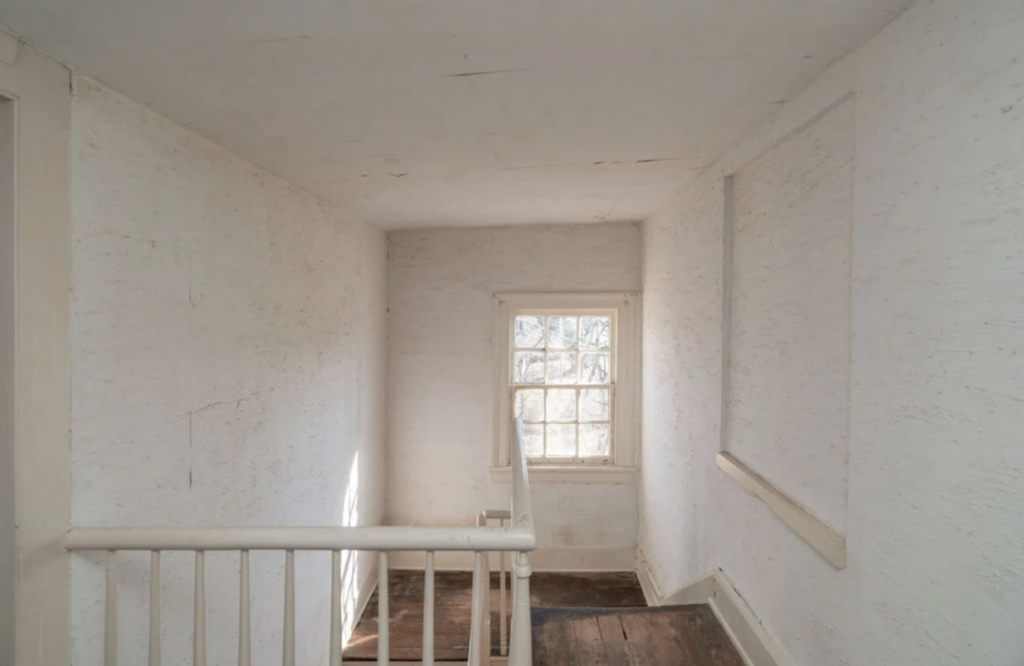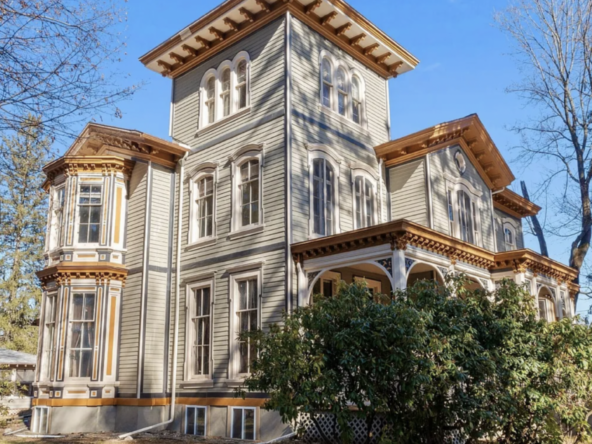What’s special about this house? At a glance, do you see anything worth preserving? Handsome red brick, original windows, lovely paneled doors and carved mantels inside…
But is this relatively modest, essentially abandoned, rather quirky house that sits right up against a road and has been altered over time worthy of the hundreds of thousands of dollars (I’ll always be a realist on that front!) it needs in rehabilitation?
It all depends on your “why”. Why is it important to preserve a house like this?
I hope that the future owner of this house will embrace the beauty in its simple details. The functionality in its 19th-century flow of space (i.e., not< open plan). The opportunity to find meaning in its challenging history.
The Fishback House in Jeffersonton, Virginia, claims a loose association with Thomas Jefferson who, according to legend, used to stop by en route between his Monticello and duties of state in Washington, D.C. That may be wishful “gilt by association,” though. Jefferson, who died in 1828, would only have known an earlier version of this ca-1830 house – the asymmetrical front entrance and blind windows on the second floor suggest that the original structure was enlarged.

The house predates the Civil War; doubtless, there were enslaved people on this land and in this house. The Little Fork Rangers were a Virginia company of soldiers that drilled here before marching off to the first battle of 1861 – as Confederates they would have called the battle “Manassas” (versus “Bull Run” as it was called in the North). The Confederates won, but it signaled that the war was to be far harder and bloodier than anyone could have imagined.
As our country wrestles with painful aspects of its history – removing monuments and renaming streets, for example – how do we think about the significance of a place like the Fishback House?
Personally, I would want to preserve the layers, leaning into the contradictions, tensions and imperfections. The friction of histories rubbing up against one another is a way to honor the lives, recognize the injustices, activate the process of reconciliation, and keep the conversation going versus attempting to tuck it away. The answer is not to erase but to tell the story. Houses like this one can still be beautiful, comfortable, functional homes, even as they challenge us.
Historic rehabilitation is a great tool for storytelling – for preserving features that bear witness to the past and introducing thoughtful updates to serve the present and future. As demanding as they can be (for all kinds of reasons!), old houses are one of the most direct channels for connecting to generational wisdom and finding meaning in our world.
 AUTHOR KATE WOOD grew up criss-crossing the country in the family’s Volkswagen Bus, visiting house museums, battlefields, Main Streets, and national parks. Today, she is an award-winning preservationist, real estate broker and principal of the full-service historic rehabilitation consulting firm, Worth Preserving. Kate believes in the essential value of old-building stewardship to sustain community character. For her, each property is a cause and each client a fellow advocate. She specializes in matching people with properties, skilled contractors, historic tax credits and other benefits to support top-tier rehabilitation projects.
AUTHOR KATE WOOD grew up criss-crossing the country in the family’s Volkswagen Bus, visiting house museums, battlefields, Main Streets, and national parks. Today, she is an award-winning preservationist, real estate broker and principal of the full-service historic rehabilitation consulting firm, Worth Preserving. Kate believes in the essential value of old-building stewardship to sustain community character. For her, each property is a cause and each client a fellow advocate. She specializes in matching people with properties, skilled contractors, historic tax credits and other benefits to support top-tier rehabilitation projects.






